Last week I talked a little bit about how abstraction had crept into my architectural photography. But that's not the first place I started moving in an abstract direction. That was in zoo photography.
Bertie the Malayan Tapir, 2010
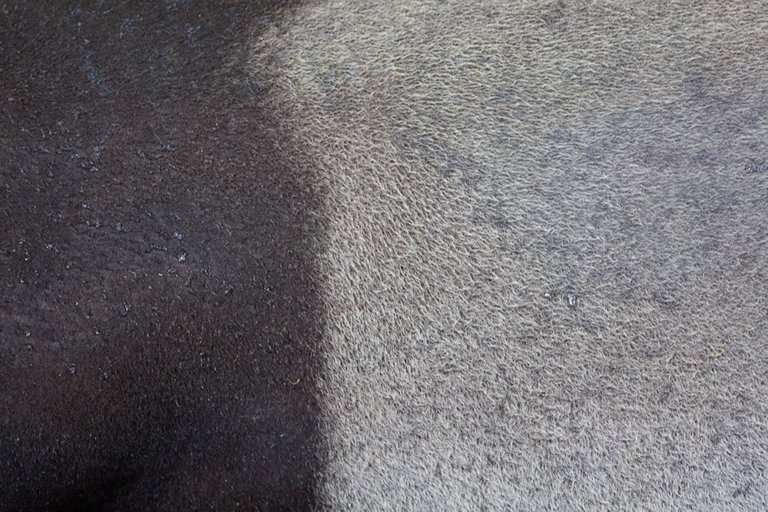
In large part the Minnesota Zoo was where I learned to photograph. It's about ten minutes from my house, and memberships are inexpensive, so when I was figuring out what I was doing I spent a lot of time there. (I still spend a lot of time there.)
I've always been very aware of the fact that our perceptions of animals are largely based around their silhouettes, and somewhat uncomfortable with it. When you're at the zoo a lot, there are only so many full-body photos you can take before you start repeating yourself the vast majority of the time. So I moved out of the silhouette mode fairly quickly, and into focusing on details, which led me into semi-abstraction.
Komodo Dragon, 2012
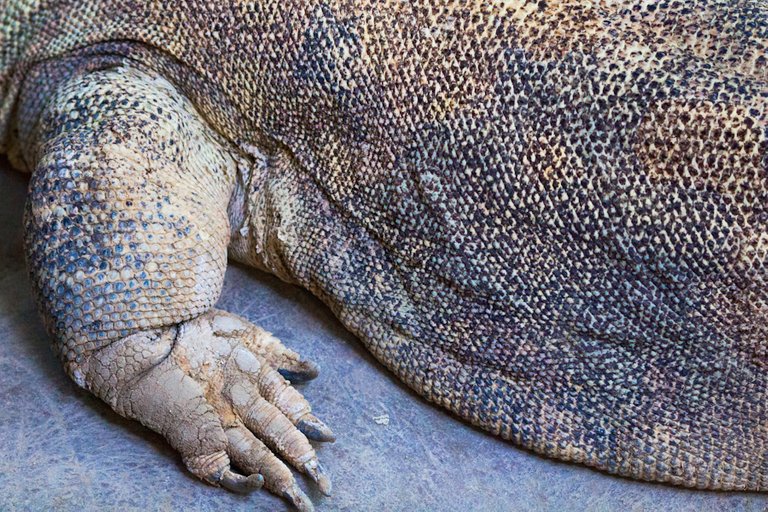
These photos are still about animals, but they're also about shape and texture in ways that most animal photography isn't. They're less about being iconic and more about showing you something you may not have noticed before.
As a zoo photographer, I spend more time with the animals than most people. Sometimes I even spend longer periods of time with the animals than their keepers do, because each keeper is responsible for many species and I have the freedom to spend an hour or more watching a single animal. This allows me to develop a more-intimate perspective, and hopefully show you something that may not have been available to you because you were trying to see everything, or working at the pace of your four-year-old.
Grizzly Bear foot, 2013
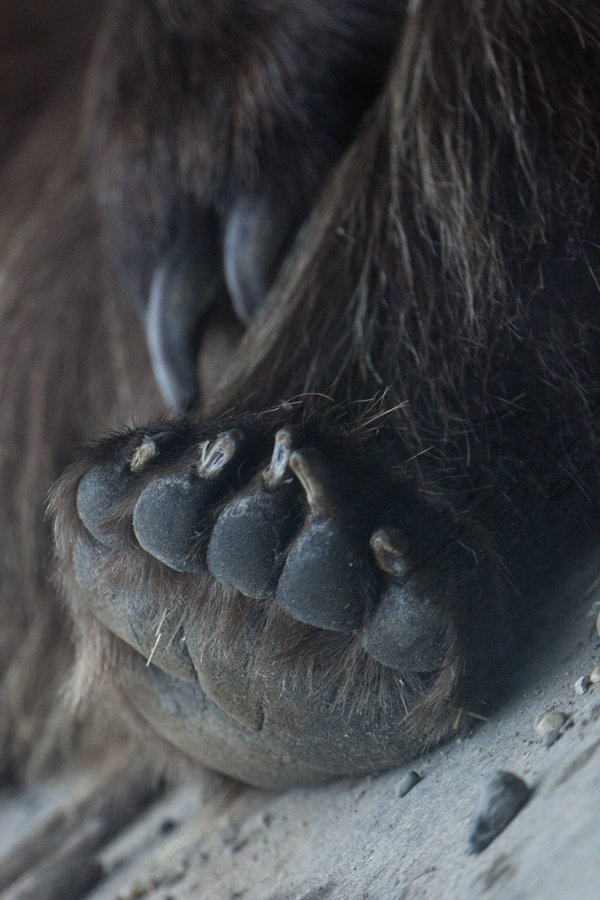
For a long time I was taking a lot of pictures of feet. We're not used to thinking about feet most of the time; we don't see people's feet very often, and we think about them even less. Which is good: people's feet aren't very interesting, at least to me. But we extend that attitude toward animal feet, which are far more diverse and spectacular.
Grizzly Bears are pretty iconic. You probably have a lot of images in your head of them, you probably know more than a few things about them. But I'm guessing you never thought about their toenails until you saw the picture on the right, here. Why would you?
The animal kingdom is full of little details like that, and my mission as a zoo photographer is to bring them to you, so you can learn about them without necessarily having to learn the skill of seeing them for yourself, or spend hundreds of hours at a zoo looking for them.
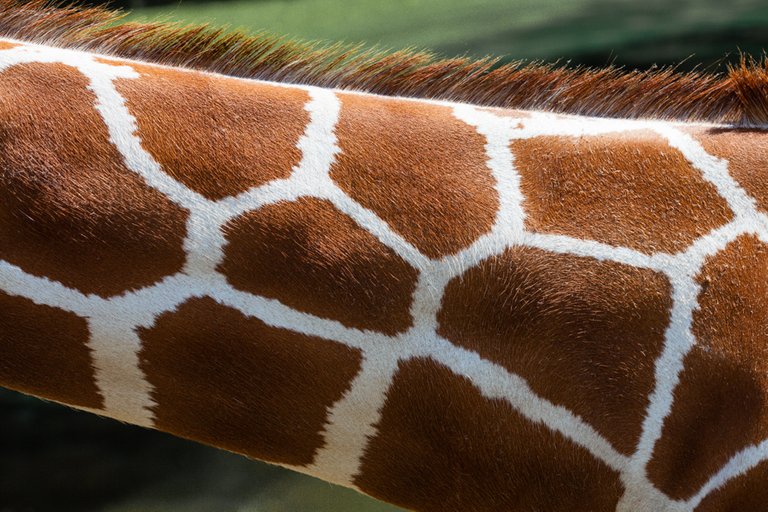
Reticulated Giraffe neck, 2013
Giraffes aren't a wholly silhouette-dependent animal. Even in illustrations they don't really look right without their reticulated patterns. But within that, there are details of how the pattern is expressed on any particular giraffe, and hair textures, and subtleties of muscle structure and color that reward a much closer examination.
Snowy Owl, 2013
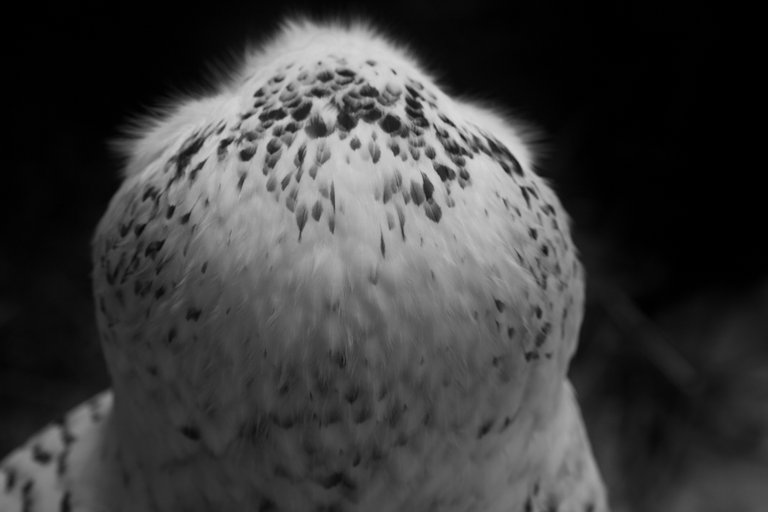
Flamingo, 2015
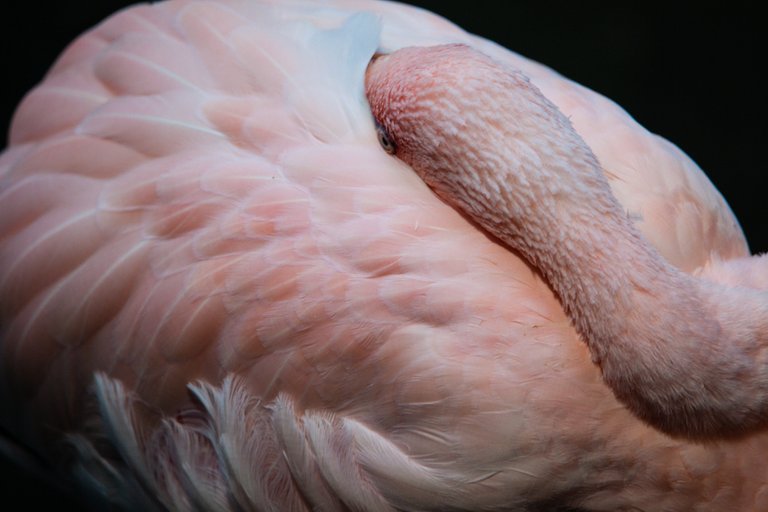
Birds also gain interesting qualities when viewed from a different perspective. Details of feathers and feather-patterns are extremely interesting, and I'm fascinated by the process of preening, which I caught this flamingo doing.
As you can see there's a wide range in how abstract I choose to go with these photos, and at the same time I'm still taking a lot of more-traditional animal portraiture. There are other series that I'm maybe spending more of my time and mental energy on these days, including Jellyfish which is sort of the next stage of abstracted animal photography. But I still keep coming back and adding to this series when I get the chance. I'll leave you with some photos from a trip I took to the Audubon Zoo in New Orleans in early 2017.
Elderly Masai Giraffe
Asian Elephant

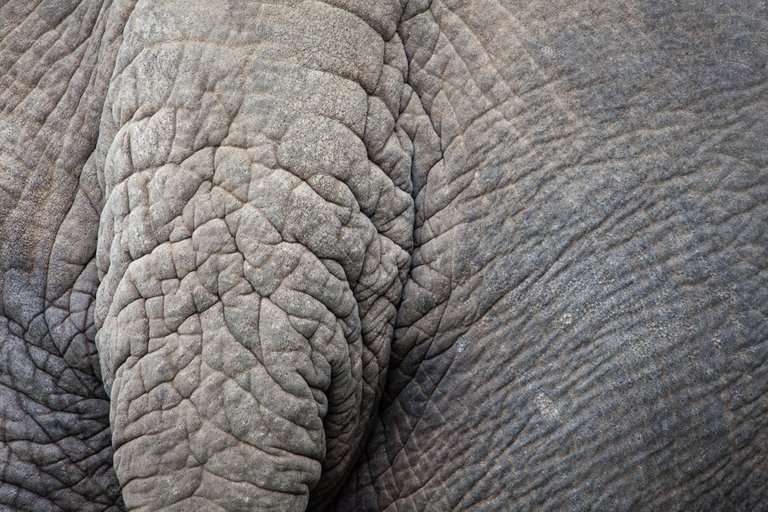
Alligator
Giant Anteater
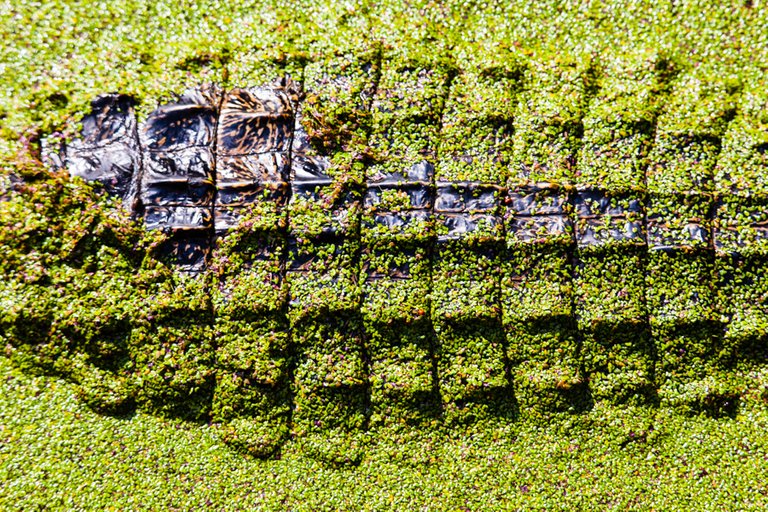
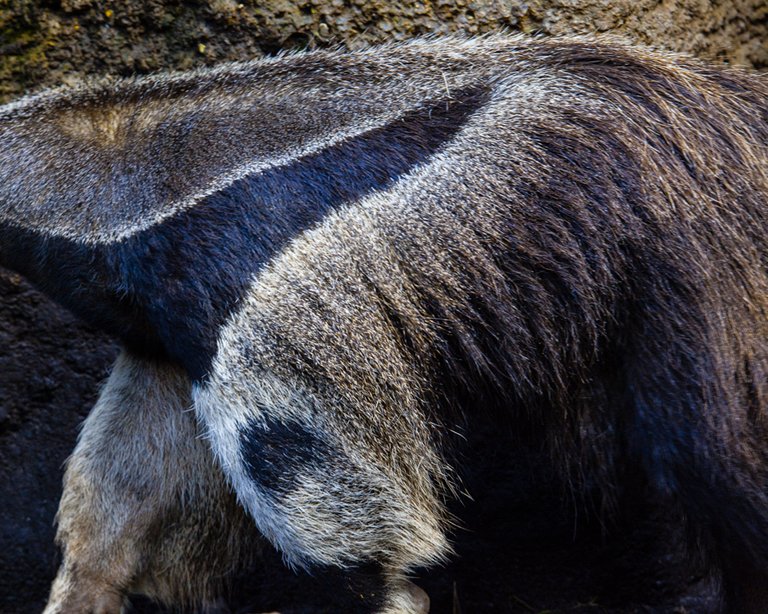
I love how specific you are touching things I could not really find somewhere else earlier! I will follow your posts now more often:)
The fact that you focus on things that we rarely notice or that most people do not know "how to see" until you point them out with your photos is fascinating to me.
On the past few months I have been studying a series of Latin American authors that belong to a category called "minor literature". Basically these authors can not be cathegorized because they do not really fit any labels, they are "weird". One of the things I like about them is that they write about things that the majority of authors will not write about, things that people do not notice or don't want to notice, the things they do not talk about (either because they do not ever stop to think about them or because they are taboo topics).
The reason I like this is because our perspective(s) of the world are shaped by what we see, and what we see is often shaped for us by someone/something else. In other words: we are taught to see . Seeing is not only a natural, biological and/or unconscious act, we see because we are taught what to see and how to see it.
And this can be taken into different contexts, like, in literature, we'd be talking about perceiving or identifying discourses, while in the zoo we'd be talking about perceiving textures on animals to compose a whole different image of them.
Anyway, sorry about the rambling haha I just feel that is fascinating to see the same attitude taken from a photographer's point of view. We should all train ourselves to see beyond what we usually see.
P.S: You're right, I never thought about a Grizzly Bear's toenails before! It's because when I think of a bear's footprint there isn't a toenail print... Now that they have been seen they cannot be unseen haha
Please never be sorry for relating things across media here. This is pretty much my dream comment.
I'm curious if this is a strictly realistic category, or if it relates to what we think of as speculative/slipstream/magic realism. I'm not sure how much "magic realism" is a true category in Latin American literature versus how much it was made up by Americans to describe what some authors are doing. (Borges, Marquez, Allende being the big ones.) My knowledge of how any of that works natively is pretty poor.
Yes, exactly. It's especially obvious in animals because so many of our animal archetypes are shaped by illustrated children's books. They're one of the earliest things we're taught to see.
Well I called it a category, but maybe I'd be going against the Minor Literature work essence if I do. The term was coined by Literary critics Gilles Deleuze and Feliz Guattari to kind of describe Kafka's work in contrast to what would be a "Major Literature", which is highly influenced and shaped by literary canon. So a minor literature work would be one that inserts inself in the context of a major literature but actually comes from minority. I.e: an author from a marginalised group that writes in a major language and inserts their work in the context of a major literature that considers them as an "outsider", or basically, a part of a minority. I don't know if I explained it very well haha
I think this article could explain it better than me
So I suppose is not a strict category more than a way of understanding how literary canon works and how discourses are selected to be a part of or stay outside of that canon.
We do study "Magic Realism" as a genre or literary movement in Latin American literature studies but I wouldn't dare to deny that it's became a tag that a lot of (american and latin american)critics use to describe a lot of works and its authors that are technically pursuing something else (in terms of style, intention, use of language, etc). Personally, I place Magic Realism mostly in the XX century and I believe that we can make such differenciation between a minor and a major literature now because Literary Critique has been constantly redefining its place and mission in the current century. (Although I'm sure an author like Borges was way ahead of Deleuze on this train of thought haha he was BRILLIANT!)
Definitely! And I'd take it a step forward and mention how animals are/were represented in classic cartoons, for example, and even in modern children educational tv shows. From a pedagogyc point of view the main objective would be to teach the child how to distinguish each animal by their sillouetes, shapes, sizes, colours, etc., but viewing them as a whole.
Something arts allow you to do is exactly the opposite: view things as a whole but also from their parts, by deconstructing each part, each layer that makes up the whole and give it a sense of meaning on its own (without reducing the whole to a mere part, of course).
I may have gone overboard here haha it's an interesting topic.
I look forward to see more of your pictures!
Oh, ok. I come from science fiction, which is kind of a ghettoized subcanonical tradition that's been traditionally extremely dominated by straight white males, so we're dealing with that both as we try to break our subject matter into to the regular canon and as we try to open up our own canon to more diverse voices. It's very much dominating the literary conversation at the moment.
Yeah, so, for example, a woman who writes science fiction in the context that you just explain could have a minor literature work in the process, or a homosexual man... but of course there are other things to take into account (according to Deleuze and Guattari:
You'd think Science Fiction as a genre would be the most open to other voices precisely because of its "ghetoized condition", even from outside of regular canon it still has to break certain barriers, traditions, beliefs... I guess every little piece of literature has its own mechanisms by which it inserts inself inside or outside of canon.
Well, it has taken a fair amount of ass-kicking and name-taking, but I feel like we are making progress. The majority of awards in the field are going to traditionally-marginalized authors now. They're still lagging in sales, because the most popular authors are still the ones who market primarily to tech-obsessed young men, but the core community has become much more inclusive.
That much is true, it's taken some time but progress is visible. I am glad that the field is becoming more and more inclusive, that also keeps the genre alive, it allows it to transform and evolve.
You really pointed it out
Animal geometrics is fascinating, it's interesting how these patterns came to be
I love both animal art and abstraction, so I am enamoured of both. I have found, lately, in my painting series I'm working on that my interior and background imagery is becoming more muted and almost abstract as if it's an abstraction I want my representative figures to dwell in. It's wonderful to play with theme and motif and style in our art, it keeps us fresh and making better pieces I believe. I love your work here.
Great pictures I like your posts! You cover a wide range showing your many interests. This makes for great varied content and shows us your thirst for knowledge and detail.
I particularly like the photo of the giant ant eater the detail of its fur is amazing. Also I feel looking at the finer details really helps in understanding the bigger picture. Nothing is actually simple in the world. It also clearly shows how everything no matter how small has an important role on this planet.
Thanks, I'm really glad for the appreciation of the diversity of my posting.
That was the first time I've ever seen a giant anteater, and it's really a powerful experience, they are huge and so very complex.
And extremely intelligent animals too and most highly evolved to a very specific way of life
The "Reticulated Giraffe neck" photo is stunning. This is a great change from the normal photos you see of animals. Really focuses on other parts of the animal that you might take for granted...aside from the Asian Elephants rear end (I'm assuming it's that). Great work.
I love that one a lot and a big print of it usually has the most-visible place in our library, which is the main socializing room in our house.
The day I was at the zoo in NOLA was Inauguration Day, and the elephant exhibit there has a button that kids can push to make elephant fart noises. I'll leave the symbolism of that to the reader.
What a clever interpretaion. I especially like the image of the alligator emerging from the floating moss and how portions of the moss takes on the pattern. Very creative!!
I usually look for textures in an urban surrounding. Love how you look at the diverse textures of animals. It's almost like you can feel these different textures through your pictures. And it makes me think about feet! Something I would honestly have NEVER thought about.
Brilliant stuff, this.
Thank you. I tried not to fill the whole post with feet but here are some more for you.
They really are fascinating! And all so different from one another. Unlike our boring limbs.
Awesome! your photos and this bolg is very inspiring, we realize so perfect and beautiful that it is nature. and thanks to people like you who convert the common that many times we do not see with the naked eye and turn it into art and it is beautiful to see all these creatures and the abstract that is your nature. Greetings brother, I enjoy watching your post.
And here is the link to my appreciation post to you for your kind gesture. I hope you don't mind
You are amazing @tcpolymath. This is a comprehensive post. Good job bro, you are good at what you love doing. https://steemit.com/esteem/@mcmusic/appreciation-note-to-tcpolymath-tim-cooper
I like it
Great photos i favor your posts! You cowl a good vary showing your several interests. This makes for excellent varied content and shows U.S. your thirst for data and detail.
Beautiful art
Please Stop - @kavinpeterson
You just said "beautiful art" and in your your last 100 comments you used 43 phrases considered to be spam and you made this exact same comment 2 times. You've received 10 flags and you may see more on comments like these. These comments are the reason why your Steem Sincerity API classification scores are Spam: 80.40% and Bot: 7.00%
Please stop making comments like this and read the ways to avoid @pleasestop and earn the support of the community.
World of Photography
>Visit the website<
You have earned 6.50 XP for sharing your photo!
Daily photos: 1/2
Daily comments: 0/5
Multiplier: 1.30
Block time: 2018-05-20T16:11:21
Total XP: 16.95/100.00
Total Photos: 3
Total comments: 0
Total contest wins: 0
Follow:
Join the Discord channel: click!
Play and win SBD:
Daily Steem Statistics:
Learn how to program Steem-Python applications:
Developed and sponsored by: @photocontests@fairlotto@dailysteemreport@steempytutorials @juliank
Amazing!!
good article
Nice post and perfect.@tcpolymath
Congratulations @tcpolymath! You have completed some achievement on Steemit and have been rewarded with new badge(s) :
Click on any badge to view your own Board of Honor on SteemitBoard.
To support your work, I also upvoted your post!
For more information about SteemitBoard, click here
If you no longer want to receive notifications, reply to this comment with the word
STOPAnimals are the closest and most devoted friends of a person. They are more sensitive and loyal to people. They are ready to be from the very beginning, and some of us do not understand this ... and the animals are on the street.
Oh how interesting @tcpolymath ! I was just browsing on Steemit and noticed your post. It's such an amazing way to look at photography, and such as interesting title as zoo photographer! I enjoy photography myself and high five to you for showing such wonderful pieces. Upvoted you to support, and if you have have time please visit my posts and feel free to provide me feedback! Cheers~
Thanks for the great post!
Magical realism is born from the perception of the world with all the senses under the filter of the heart.
Thanks for sharin. The photos of this excellent work I call them #Imagenposible.